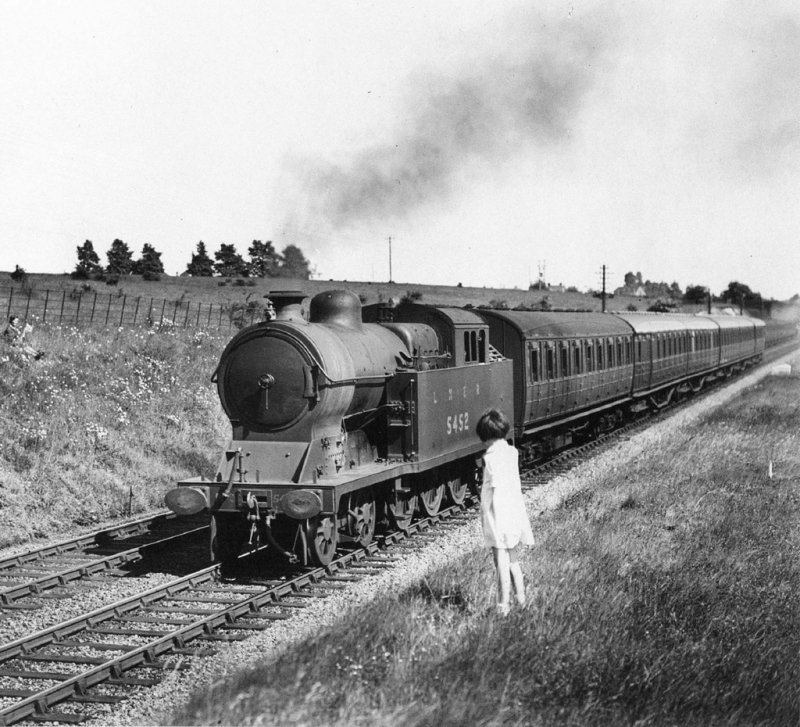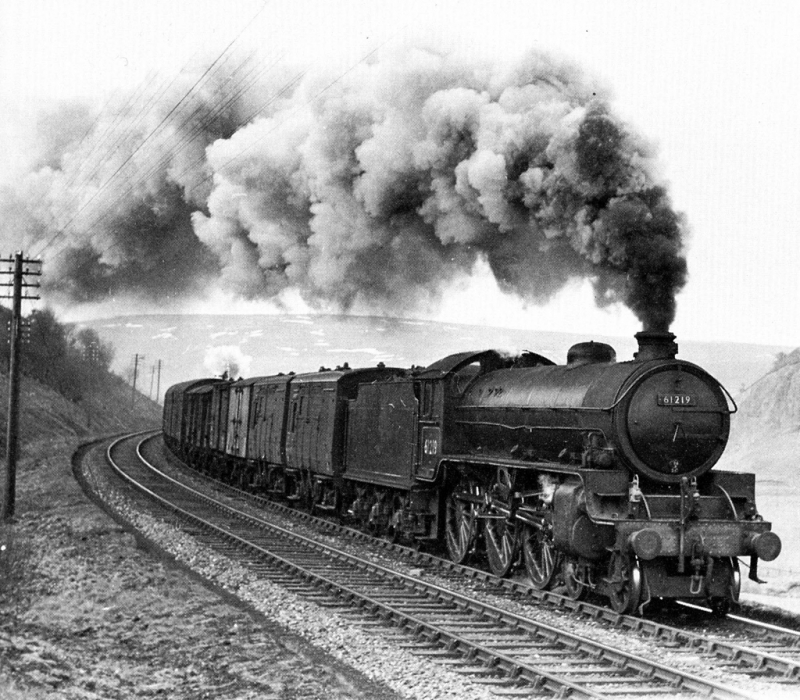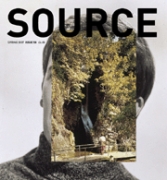John Stezaker
Talks about Collecting and how he Produces his Work
Issue 50 Spring 2007
View Contents ▸
View selection of photographs by John Stezaker ▸
Richard West: How did you first started cutting up pictures and putting them together?
John Stezaker: In 1975 I did a publication for the Paris Biennial and in Paris I suddenly discovered this thing called the Photoroman which was a pictorial, cinematic magazine in comic strip form, which didn't exist in England. It was great because they were cinematic imagery available in quantities, and I could always find one magazine and within a month buy five more. I must have done thousands and thousands of Photoromanic collages, all but a handful of which I destroyed in a great ritual act of destruction many years later. They were very important in working through a kind of vocabulary of cutting and tearing and folding.
I started collecting some stills at the same time but I didn't know what to do with them initially and I think the first film still collage was in 1977.
Richard West: How did you collect film stills?
John Stezaker: Well 1977 was a key year because all the big Odeon branches throughout Britain were being closed down. You had these huge cathedral like spaces in the tiniest provincial town, in which there would be one film shown per week advertised in a sequence of photographs, 10x8 bromides and slightly enlarged foyer stills. Those were the things that were finding their way into second-hand book shops. There was one in particular that kept two cardboard boxes of them which became the titles of my series of works: Film Stills and Film Portraits.
Richard West: In the Mask pictures it's a simple process of putting one picture in front of another picture. Could you describe how they come together?
John Stezaker: My postcard / film still combinations pre-exist the Mask series by about three or four years. This was a purely intellectual idea: you've got a film still which is an image of time and you've got a postcard which is an image of place, and I called the series Here and Now. It was a very crude attempt to combine these two dimensions of the image. They involved images which reversed that process so for example the postcards chosen were all of steam trains coming through tunnels, an image that we associate with time passing, and the moments were chosen for their stillness. So the first conceptual idea of combining here and now became a reversal of that. I think it was the first realisation of what Blanchot calls the 'essential ambiguity of the image'; whenever you want it to do one thing it does another. Ernest Wethersett - Class A5, 4-6-2T no. 5452 is seen at Dutchlands with a six coach train. (1627X)
Ernest Wethersett - Class A5, 4-6-2T no. 5452 is seen at Dutchlands with a six coach train. (1627X)
Then about 1979 was the first Mask piece. By that stage the combination of film still and postcard had shifted from trains to anything. The first one to emerge I suppose was an accident really; it fell into place and became a kind of mask. I started to think about the mask in relation to the film portrait, as analagous to the relationship between the postcard and the film still. Initially I used images of Landscape: even if it's got a waterfall flowing through it it's still fixed, whereas the face is constantly mobile. Elias Canetti talks about the mask's relationship with the face being a relationship of fixity instead of flux. In Crowds and Power he talks about that space behind the image and that became very interesting to me. I started trying to address the space that was hidden by the mask. Very slowly I became aware of how the postcard, instead of being in front of the face was a space behind it. You could say metaphorically that it was the space of Death. I had been reading Blanchot since the early 80s and his writing on the relationship between the image and the cadaver was very important too. It became a way of negotiating a threshold between the living and dead which, in a way, is what I think all art is trying to do, it's trying to reanimate the dead. All art in a sense is the treatment of an object as if it were a living being. So you handle a violin with great care, you put it in its case the way you put a baby into a crib. As soon as you start to treat a thing as if it's alive it reveals a side of itself that is alive. That moment is what really interests me.
Richard West: What different types of reproduction do you collect?
John Stezaker: I have a collection of images of mannequins, I have a big collection of film stills and film portraits, I have a huge collection of postcards, I have a collection of cookery books, books on gymnastics, books on dance, I have a budding collection of underwater imagery, I have a whole shelf of books on kittens; I've only ever used one, but one day they could suddenly become something. That's the way it happens, they hang around for years.
Richard West: Could you describe what attracts you to certain photographers?
John Stezaker: I haven't a clue. I actually write about them as a way of consciously trying to reflect on what it is. For a while I worked a lot with one of those famous railway photographers, Eric Treacy, the Bishop of Wakefield. My first Sublime - which is a series based on the puffs of smoke from railway trains - worked with Treacy because he was the first railway photographer to give a good proportion of the picture to the puff of smoke. All the real hardliners just concentrated on the engine because that's what they thought it was all about. Treacy introduced this big puff of smoke into the pictorial vernacular of the 1950s and of course it was an enormously important image, the half of which was technology, the other half was the puff of smoke above it. I thought it was rather interesting that it had to be a man of the cloth who revealed the heaven over the world of technology in that way. But I have now become very suspicious of the particular pieces I used, precisely because he was so attentive to those puffs of smoke, and I am now trying to use much more accidental ones by other train photographers. Eric Treacy - A parcels train approaching Shankend on the Waverley route headed by B1 4-6-0 no. 61219 (64B Haymarket) banked in the rear from Hawick to Whitrope.
Eric Treacy - A parcels train approaching Shankend on the Waverley route headed by B1 4-6-0 no. 61219 (64B Haymarket) banked in the rear from Hawick to Whitrope.
In the end my favourite railway photographer is a very mysterious man called Wethersett. The reason I am interested in him is that he was a Sunday photographer from a completely different social class from Treacy. He often used his family in the foreground. It turns out he didn't have a daughter but he obviously used to take out a neighbour's daughter on his weekend. His wife is always seen reading a book on the side of the bank. It's something about these two women: the girl who crosses the line dangerously and is seen on the other bank and his wife on this side. There is a sort of strange triadic thing between this thundering, masculine phallus as it comes racing through the tunnel and these two women that interests me.
He is one of these people who as a photographer obviously set his camera up. He knew exactly what he was going to take. He took it from the absolutely classic three-quarter position, everything is an almost mathematically golden section. Within railway photography he is regarded as the classicist whereas Treacy is the romantic. He did everything according to the rule book of composition, but that is what makes them so stunning. In fact, my favourite photograph of all time is one of his and it is the picture of a goods train, on a narrow gauge line that's just about to be closed by Beeching, going into the sunset. I love his titles too, they are even longer than Damien Hirst's, they go on for paragraphs.
Richard West: Trains obviously have some resonance for you.
John Stezaker: Yes I was a trainspotter when I was young. Funnily enough no one believes this in talks I say it as a joke: 'I wasn't a trainspotter really, I went along for the aesthetics of it' but it was absolutely true, I used to think of myself as a sort of undercover trainspotter. They were amazing aesthetic experiences. For someone born in the Midlands with no view of the sea and with no access to mountains that was the Sublime for us. You can see why Turner was obsessed with them, it was the only thing that could challenge the other things that obsessed him; mountains, avalanches, stormy seas and trains.
Other articles by Richard West:
Source Photo: Do we need Photography Galleries? [Blog Post] ▸
Source Photo: The New Photo Galleries: A US Perspective [Blog Post] ▸
Source Photo: List Mania: 2011 Photobook Roundup [Blog Post] ▸
Source Photo: Is There a Crisis in Art Book Publishing? [Blog Post] ▸
Source Photo: Charlotte Cotton Resigns Media Museum [Blog Post] ▸
Issue 52: Teenage Girls at the Edges of Cities at Night... [Feature] ▸
Other articles mentioning John Stezaker:
Other articles on photography from the 'Photomontage' category ▸






